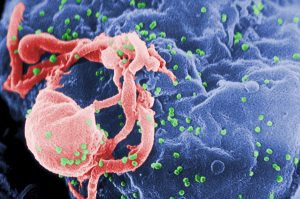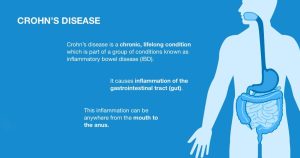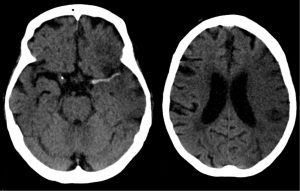REC articles are not the view or opinion of Alpha Extract Administrators
14 Amazing Uses and Medical Benefits of Marijuana – MMJ
Mediame.guru

December 8, 2019
WHAT IS MEDICAL MARIJUANA OR MEDICAL CANNABIS?
In this post, we are going to discuss about the top 14 amazing uses and Medical Benefits of Marijuana. Medical marijuana is a plant-based medicine from the Cannabis sativa or Cannabis indica species with three major active compounds: THC, CBD, and CBN. The Cannabis plant was used medically for centuries around the world until the early 1900s.
WHAT ARE THC AND CBD?
THC or tetrahydrocannabinol is the psychoactive compound in marijuana. It is responsible for the “high” people feel. There are two man-made drugs called dronabinol (Marinol) and nabilone (Cesamet) that are synthetic forms of THC. They are FDA-approved to prevent nausea and vomiting in people receiving chemotherapy.
CBD or cannabidiol is another compound in marijuana that is not psychoactive. CBD is thought to be responsible for the majority of the Medical Benefits of Marijuana.
Epidiolex is a CBD oil extract that is undergoing clinical trials for epilepsy.
Medical marijuana products are available with a huge range of THC and CBD concentrations. Expert opinion states that 10mg of THC should be considered “one serving” and a person new to medical marijuana should inhale or consume no more until they know their individual response.

WHAT ARE THE USES FOR MEDICAL CANNABIS
Medical uses of cannabis include both studied and approved uses and off-label uses. In a recent research survey, the most common reasons people use medical marijuana are for
- pain,
- anxiety,
- depression,
- muscle spasticity, and
- inflammatory bowel diseases such as Crohn’s disease.
More research has been conducted on the compound CBD. Medical CBD is anti-inflammatory, anticonvulsant, antioxidant, neuroprotective, and anxiolytic, antipsychotic, and anti-emetic. The CBD compound in medical marijuana appears to be neuroprotective in Huntington’s, Parkinson’s, and Alzheimer’s disease, fetal hypoxia, and other neurodegenerative conditions and movement disorders.
WHAT ARE THE MEDICAL BENEFITS OF MARIJUANA
- MMJ CAN SLOW AND STOP CANCER CELLS FROM SPREADING
It is one of the most important medical benefits of marijuana. It was found in the study, published in the journal Molecular Cancer Therapeutics, that Cannabidiol has the ability to stop cancer by turning off a gene called Id-1. In 2007, researchers at California Pacific Medical Center in San Francisco reported that CBD may prevent cancer from spreading. The researchers experimented on breast cancer cells in the lab that had a high level of Id-1 and treated them with cannabidiol.
The outcome was rather positive, the cells had decreased Id-1 expression, and were less aggressive spreaders. In fact, the American Association for Cancer Research has found that marijuana actually works to slow down tumour growth in the brain, breast, and lungs considerately.

2. MEDICAL MARIJUANA HELPS WITH PAIN MANAGEMENT
2nd medical benefits of marijuana is pain management. Chronic Pain is one of the most common ailments for which doctors prescribemedical marijuana and a recent survey published in The Spine Journal found that 1 out of 5 patients at a Colorado spine centre were using cannabis to manage their pain. Of those, nearly 90% said it greatly or moderately relieved their pain.
The spine clinic study was merely a survey, which means more research will be necessary for the potential role of cannabis in treating back pain. With that said, plenty of people will tell you it helps manage pain and science is beginning to back their claims. Studies suggest medical marijuana could offer relief for various types of pain, including the following:
- Chronic pain and cannabis
- Neuropathic pain and cannabis
3. PREVENT ALZHEIMER’S WITH THE PROPER DOSE OF MMJ
One of the most important medical benefits of marijuana is THC, the active ingredient present in marijuana slows the progression of Alzheimer’s disease. A 2006 study led by Kim Janda of the Scripps Research Institute found out. THC slows the formation of amyloid plaques by blocking the enzyme in the brain that makes them. These plaques kill the brain cells and potentially lead to Alzheimer’s disease.

4. MEDICAL CANNABIS HAS BEEN USED TO TREAT GLAUCOMA
Marijuana can be used to treat glaucoma, which increases the pressure in the eyeball, injuring the optic nerve and causing loss of vision. According to the National Eye Institute, marijuana lowers the pressure inside the eye.
“Studies in the early 1970s showed that marijuana, when smoked, lowered intraocular pressure (IOP) in people with normal pressure and those with glaucoma.”
These effects of the drug can prevent blindness. It is a very unique medical benefits of marijuana.
5. RELIEVE ARTHRITIS
In 2011, researchers reported that cannabis reduces pain and inflammation, and promotes sleep, which may help relieve pain and discomfort for people with rheumatoid arthritis.
Researchers of the rheumatology units at several hospitals gave their patients Sativex, a cannabinoid-based pain-relieving medicine. After two weeks, patients on Sativex had a significant reduction in pain and improved better sleep quality compared to placebo users.

6. SOOTHE TREMORS FOR PEOPLE WITH PARKINSON’S DISEASE
Recent studies from Israel shows that smoking marijuana remarkably reduces pains and tremors and improves sleep for Parkinson’s disease patients. What was impressive about the research was the improvement of fine motor skills among patients.
Israel has made medical marijuana legal, and a lot of research into the medical uses of weed is done there, supported by the Israeli Government.
7. HELP WITH CROHN’S DISEASE
Cannabis may be helpful with curing Crohn’s disease. Crohn’s disease is an inflammatory bowel disorder that causes pain, vomiting, diarrhea, weight loss, and more.
But a recent study in Israel showed that smoking a joint considerably reduced Crohn’s disease symptoms in 10 out of 11 patients, and caused a complete cancellation of the disease in five of those patients.
Of course, this is a small study, but other researches have shown similar results. The cannabinoids from cannabis seem to help the gut control bacteria and intestinal function.

8. DECREASE THE SYMPTOMS OF DRAVET’S SYNDROME
Dravet Syndrome causes seizures and severe developmental delays. Dr. Sanjay Gupta, the renowned chief medical correspondent for CNN, is treating a five years old girl, Charlotte Figi, who has Dravet’s Syndrome, with medical marijuana strain high in cannabidiol and low in THC.
During the research for his documentary “WEED”, Gupta interviewed the Figi family, and according to the film, the drug decreased her seizures from 300 a week to just once every seven days. Forty other children are using the same medication, and it has helped them too.
The doctors who are recommending this medication say that the cannabidiol in the plant interacts with the brain cells to quiet the excessive activities in the brain that causes the seizures.
If you are looking for a medical card online from san diego then check out this article on “Get Your Instant Cannabis Cards in San Diego for 39$“
9. LESSEN SIDE EFFECTS FROM TREATING HEPATITIS C, AND INCREASE TREATMENT EFFECTIVENESS
Treating Hepatitis C infection has severe side effects, so severe that many people are unable to continue their treatment. Side effects range from fatigue, nausea, muscle pains, loss of appetite, and depression- and they last for months.
A 2006 study in the European Journal of Gastroenterology and Hepatology discovered that 86% of patients using marijuana successfully finished their therapies, while only 29% of the non-smokers completed their treatments, maybe because marijuana helps to lessen the treatments’ side effects.
Cannabis also helps to improve the treatment’s effectiveness. 54% of the Hep C patients smoking marijuana got their viral levels low, and kept them low, compared to the only 8% of the non-smokers.
10. DECREASE ANXIETY
In 2010, researchers at Harvard University suggested that another of the drug’s benefits may actually be reduced anxiety, which would improve the smoker’s mood and act as a sedative in low doses.
Beware, though, higher doses may increase anxiety and make you paranoid.
11. PROTECT BRAIN AFTER A STROKE
Research (done on rats, mice, and monkeys) from the University of Nottingham shows that cannabis may help protect the brain from damage caused by a stroke by reducing the size of the area affected by the stroke.
This isn’t the only research that has shown neuroprotective effects from cannabis. Some research shows that the plant may help protect the brain after other traumatic events like concussions.

12. PROTECT THE BRAIN FROM CONCUSSION AND TRAUMA
A recent study in the journal Cerebral Cortex showed possibilities that marijuana can help heal the brain after a concussion, or another traumatic injury.
In the journal, it was said that the experiments were done on mice, and that marijuana lessened the bruising of the brain and helped with healing mechanisms after a traumatic injury.
Harvard professor emeritus of psychiatry and marijuana advocate Lester Grinspoon recently wrote an open letter to NFL Commissioner Roger Goodall, saying that NFL should stop testing players for marijuana, and instead should fund for research on marijuana plant’s ability to protect the brain.
In the open letter, he writes,
“Already many doctors and researchers believe that marijuana has incredibly powerful neuroprotective properties, an understanding based on both laboratory, and clinical data.”
In response, Goodall recently mentioned that he’d consider permitting athletes to use marijuana if medical research shows that it’s an effective neuroprotective agent.
13. HELP ELIMINATE NIGHTMARES
This is a bit complicated because it involves both positive and negative effects. Marijuana may disturb the sleep cycle by interrupting the later stages of REM sleep.
However, people who suffer from serious nightmares, especially patients with PTSD, can be helpful. Nightmares and other dreams occur during those same stages of sleep.
By interrupting REM sleep, many of those dreams may not occur. Research using a synthetic cannabinoid, like THC, showed a decrease in the number of nightmares in patients with PTSD.
Marijuana may be a better sleep aid than some other medications or even alcohol because the latter two may potentially have worse effects on sleep, though more research is needed on the topic.
14. TREAT INFLAMMATORY BOWEL DISEASES
Just like Crohn’s disease, patients with other inflammatory bowel diseases like ulcerative colitis could benefit from marijuana use, studies suggest.
In 2010, the University of Nottingham researchers has found that chemicals in marijuana, including THC, and cannabidiol, interact with cells in the body that play an important role in gut function, and immune system.
THC like chemicals made by the body increases the permeability of the intestines, allowing bacteria in. The plant-derived cannabinoids in marijuana block these body-cannabinoids, stopping this permeability, and making the intestinal bond tighter together.
Check out our article on ” Benefits of obtaining a Medical Marijuana Card“
WHAT RESEARCH IS BEING DONE FOR MEDICAL MARIJUANA?
There are numerous studies underway on medical marijuana, but research is challenged by limited access has given the FDA classification. A search of the National Institutes of Health-funded projects list in 2016 revealed 165 studies related to cannabis and 327 studies related to the search term marijuana. The majority of these studies are surveyed into use patterns. Many are also basic science studies investigating how the endocannabinoid system in the brain and immune system works. Survey studies that anonymously assess user’s habits and reported benefits may provide insight into the effects of real-world use patterns. There are over 60 peer-reviewed research studies that have been published about medicinal cannabis. Sixty-eight percent of these studies found benefit while 8% found no benefit. Twenty-three percent of the studies were inconclusive or neutral. The most promising areas of research appear to be in the use of CBD for neuroprotection.
ARE THERE ANY SIDE EFFECTS OF MEDICAL MARIJUANA?
Medical marijuana side effects are minimal when used at low doses.
At higher doses, side effects include
- dizziness,
- paranoia, and
- psychoactive effects including mood changes and hallucinations.
There are concerns about the adverse effects of cannabis among adolescents because the risks are greater to the immature brain and neurological system. Concerns include increased risk of schizophrenia and loss of IQ.
There are public health concerns about the safety of driving under the influence of medical marijuana. A JAMA study found lower rates of opioid overdose deaths in states with legal medical marijuana
IS MEDICAL MARIJUANA LEGAL?
At the time this article was written, 23 states have legalized medical marijuana with varying restrictions. However, it is classified as a Schedule I substance by the Federal Drug Administration (FDA) and thus is illegal at the Federal level.
Read our article on “Why should marijuanas be legalized“
BECOMING A PATIENT
There are just four basic steps to becoming a legal medical marijuana patient in your state:
- Proof of residence
This is most easily proven with a valid driver’s license.
- Eligible condition
The list of eligible health conditions for access to medical marijuana varies from state to state. Many conditions, such as cancer, glaucoma, HIV / AIDS, neuropathic pain, arthritis, and other such severe and debilitating or terminal illnesses qualify in most states.
- Knowledge of your local laws
Medical cannabis patients and their providers are vulnerable to federal and state raids, arrest, prosecution, and incarceration. As a result, these individuals may suffer from pervasive discrimination in employment, child custody, housing, public accommodation, education, and medical care. Laws protecting patients and their providers vary from state to state and, in some cases, may vary from county to county.
- Consent from a physician or other qualifying medical professional
It is best to work with your primary care physician, but if they are reluctant or you don’t have one, you can find a list of doctors familiar with medical cannabis on NORML’s Website.
The health benefits of medical marijuana are among the countless benefits this plant has. It is still puzzling how medical marijuana is still not legal in most of the country, and still retains such a negative reputation.
Hopefully, in the near future, medical science continues to prove its benefits in more fields, and make this plant a famous cure for all major kinds of ailments.
REFERENCES
- Institute of Medicine of the National Academy, author. Relieving Pain in America. 2011[Google Scholar]
- Thernstrom M. The Pain Chronicles. New York: Farrar, Straus, and Giroux; 2011. [Google Scholar]
- Oakie S. A Flood of Opioids, a Rising Tide of Death. NEJM. 2010;363:1981–1985. [PubMed] [Google Scholar]
- Substance Abuse and Mental Health Services Admin, author. Drug Abuse Warning Network: selected tables of national estimates of drug-related emergency visits. Rockville, MD: Center for Behavioral Health Statistics and Quality, SAMHSA; 2010. [Google Scholar]
- CDC, author. Opioids Drive Continued Increase in Drug Overdose Deaths. Press release Feb 20, 2013. [Google Scholar]
- Purdue Pharma LP, author. An Overview of the Oxycontin Label Update Deterrence Studies. 07/13. [Google Scholar]
- Iverson LL. The Science of Marijuana. New York: Oxford University Press; 2000. [Google Scholar]
- Sidney S, Beck JE, Tekawa IS, Quesenberry CP, Friedman GC. Marijuana use and mortality. Am J Public Health. 1997;87(4):585–590. [PMC free article] [PubMed] [Google Scholar]
- Hashibe M, Straif K, Tashkin DP, Morgenstern H, Greenland S, Zhang ZF. Epidemiologic review of marijuana use and cancer risk. Alcohol. 2005;35(3):265–275. [PubMed] [Google Scholar]
- Tashkin DP. Smoked marijuana as a cause of lung injury. Monaldi Arch Chest Dis. 2005;63(2):93–100.[PubMed] [Google Scholar]
- Abrams D, et al. Vaporization as a Smokeless Cannabis Delivery System. Clin Pharmacol Ther. 2007;82(5):572–578. [PubMed] [Google Scholar]
- institute of Medicine, author. Marijuana and Medicine: Assessing the Science Base. 1999[Google Scholar]
- Weil A. San Francisco Chronicle. 2002 Jun 6; [Google Scholar]
- Grinspoon L. “I have yet to examine a patient who has used both smoked marijuana and Marinol who finds the latter more useful.” International Journal of Drug Policy. 2001 Issue. [Google Scholar]
- Lynch ME, Campbell F. Cannabinoids for treatment of chronic non-cancer pain; a systemic review of randomized trials. Br J Clin Pharmacol. 2011 Nov;72(5):735–744. [PMC free article] [PubMed] [Google Scholar]
- Wilsey B, et al. A randomized, placebo-controlled, crossover trial of cannabis cigarettes in neuropathic pain. J Pain. 2008;9(6):506–521. [PMC free article] [PubMed] [Google Scholar]
- Abrams D, et al. Cannabis in painful HIV-associated sensory neuropathy: a randomized placebo-controlled trial. Neurology. 2007;68(7):515–521. [PubMed] [Google Scholar]
- Rog, et al. Oromucosal THC/cannabidiol for neuropathic pain associated with MS. Clin Ther. 2007;29(9):2068–2079. [PubMed] [Google Scholar]
- Ware MA, Ducruet T, Robinson AR. Evaluation of herbal cannabis characteristics by medical users: a randomized trial. Harm Reduction J. 2006 Nov 13;3:32. [PMC free article] [PubMed] [Google Scholar]
- Hawai‘i Medical Association Resolution. 2010 Jun 18;
| · NCBI: Cannabidiol |
| · National Eye Institute: Glaucoma and Marijuana Use |
| · VCU: Marijuana and Its Receptor Protein |
| · Journal of Pharmacology and Experimental Therapeutics: The Endogenous Cannabinoid System Regulates Seizure Frequency and Duration in a Model of Temporal Lobe Epilepsy |
| · USA Today: Israel pushing ahead in medical marijuana industry |
| · Harvard: Medical Marijuana and the Mind |
| · Cancer.gov: Marijuana and Cancer |
| · HelpGuide: Post-Traumatic Stress Disorder (PTSD) |
| · The New England Journal of Medicine: Respiratory Myoclonus (Leeuwenhoek’s Disease) |
| · Aspet: Pharmacalogical Effects of Cannabinoids |
| · NCBI: The use of a synthetic cannabinoid in the management of treatment-resistant nightmares in posttraumatic stress disorder |
| · Oxford Academic: CB1 and CB2 Cannabinoid Receptor Antagonists Prevent Minocycline-Induced Neuroprotection Following Traumatic Brain Injury in Mice |
| · Motherboard: The NFL Should Combat Concussions with Cannabis |
